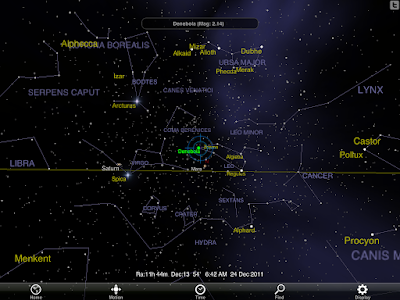This is the perfect time to observe; when the moon and Venus decide to join in conjunction, especially during the holiday winter season, it should be a sight to fully savor. Once the skies darken in total, and following the imbibing of your favorite beverage or indulging of your festive foods, note the moon's hidden face shining faintly thanks to "gegenschein" or what is otherwise known as counter shine. Sometimes it is mistaken, as this would be on Monday evening, as earthshine. Earthshine is simply the sunlight reflecting off the earth's atmosphere back onto the moon whereas gegenschein is at the "anti-solar" point, truly in opposition to the sun's celestial location.
Note the diagram explaining the concept of earthshine.
This phenomenon to be observed Monday is caused by Earthshine, a delicate veil of sunlight reflected from the big blue marble. Earthshine makes this phase of the moon one of my favorites! Look even higher in the sky and take note of beautiful Jupiter! Located now in the constellation of Pisces, Jupiter is the third brightest object in the sky, second to only Venus and the Moon! With little effort, most everyone should be able to enjoy their wander and beauty! At least the NWS suggests that skies should be mostly clear to enjoy this astronomical observation, up until 8 pm when the skies go ~50% covered (blue line).
Here is another take on the skies for the near term...dark blue is a good thing!
For you early risers (like myself), look high in the sky and take note of Mars, Saturn, Arcturus, and Spica. See the graphic below to get your bearings to ID this spectacular sight in the early morning high sky. You are looking nearly overhead and slightly towards the south. It does appear that we will have clear skies over the next few mornings to note this celestial offering of wonderment for our hedonistic viewing pleasures! Use the handle of the "Big Dipper" to "Arc to Arcturus...then Speed onto Spica"! Saturn is located slightly east of Spica at this time. Orion and the Winter Triangle are heading westward and nearly setting early in the December morning sky. Get out there and check it out!
OK...again I've rambled enough. You see, I simply love this stuff and am in total awe of this natural world that is there for our interpretation and understanding! It really is that simple. To begin to wonder is to begin to understand and learn...OK, OK, OK...now sit back and enjoy what was written by Gordon Lightfoot and sung beautifully by Sarah McLaughlin. My wife turned me onto this song and it is spectacular.
Merry Christmas Y'all!
Smitty
AA: Looking up to the heavens. Note on Monday evening at sunset, Venus and the Crescent moon on the along the western horizon. It should be kinda cool!






No comments:
Post a Comment